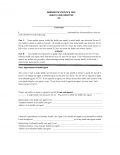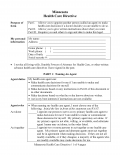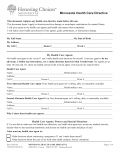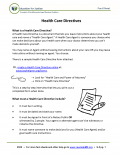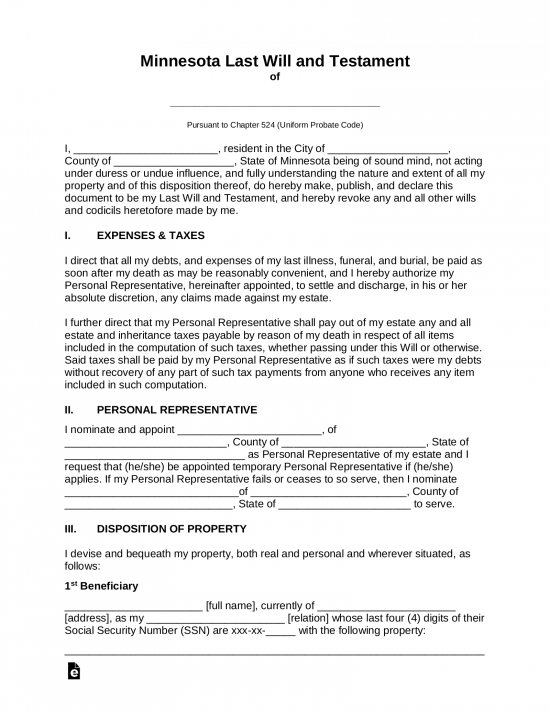Updated October 22, 2023
A Minnesota advance directive is a form that can be used to elect a person to act as a health care agent for another person. In an optional attachment, the living will, a person may choose their end-of-life preferences and organ donation options. Once complete, the advance directive must be signed in the presence of a notary public or two (2) witnesses.
Advance Directive Includes
- Appointment of Health Care Agent
- Health Care Instructions
Table of Contents |
Laws
Statute – Chapter 145C (Health Care Directives)
Signing Requirements (§ 145C.03) – Two (2) witnesses or a notary public. If you choose to have the power of attorney witnessed, at least one (1) of the witnesses may not be a health care provider or an employee of a provider directly attending to you.
State Definition – (§ 145C.01 Subd. 5a) – “Health care directive” means a written instrument that complies with section § 145C.03 and includes one or more health care instructions, a health care power of attorney, or both; or a durable power of attorney for health care executed under this chapter before August 1, 1998.
Versions (8)
- Attorney General
- Funerals.org
- Honoring Choices
- LawHelpMN.org
- MN.gov
- Mayo Clinic
- Spanish (Español)
- University of Minnesota
Download: PDF
Download: PDF
Download: PDF
Download: PDF
Download: PDF
Download: PDF
Download: PDF
Download: PDF
How to Write
Download: PDF, MS Word, OpenDocument
Identify the Minnesota Principal
(1) Minnesota Patient or Principal Name. Begin issuing your treatment preferences to Minnesota Medical Professionals by documenting your full name to the initial declaration statement.

Minnesota Health Care Representative
(2) Name Of Patient Advocate. The Minnesota Health Care Representative must be approved to decide on your medical treatment when you do not have the ability to do so yourself or communicate with attending Physicians in the State of Minnesota. This Party must be identified in this form so that he or she can have the ability of gaining the principal power you wish to designate.
(3) Patient Advocate Relationship To Principal. Define how the Minnesota Health Care Representative you named above is related to you. Provide this where requested (i.e., spouse, parent, sibling, trusted friend).
(4) Telephone Numbers.
(5) Minnesota Health Care Representative Address.
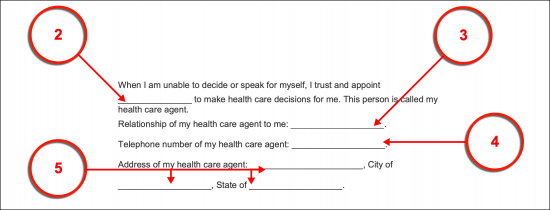
First Alternate (Successor) Patient Advocate
(6) Name of First Alternate Patient Advocate. Naturally, you will have appointed an extremely and reliable Party as Minnesota Health Care Representative, however, there may be circumstances that prevent him or her from assuming this role. For example, your Minnesota Health Care Representative may be traveling and unreachable may have been revoked as an Agent before a replacement appointment is made, or refuses (for any reason). To make sure that someone can still present your treatment decisions to attending Physicians, name an Alternate Agent to take the vacant Patient Advocate role. This, too, should be a Private Party that you consider extremely reliable.
(7) First Alternate Advocate Relationship To Principal. The way your Alternate Agent is related to you is needed before providing his or her contact information.
(8) Phone Numbers.
(9) Address Of Successor Patient Advocate.
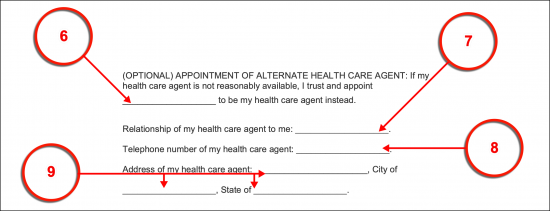
Minnesota Principal Powers For Patient Advocate
(10) Direct Approval Of Patient Advocate Instruction. This document presents a record of the general principal powers in medical decisions your Minnesota Health Care Representative will be able to display on your behalf. This default granting of power may be controlled, limited, edited, restricted, or even explained further through the space provided at the end of this list. You may also utilize this area to document exact instructions regarding your medical treatment, the decisions you allow your Patient Advocate to make, and the start and termination dates of this appointment.Post-Death Authority Of The Patient Advocate

(11) Anatomical Gifts. The State of Minnesota will not automatically assume that you wish your Patient Advocate to make anatomical gifts (otherwise referred to as organ donations) of your body upon death. If you wish to grant him or her this authority, then you must deliver your initials to approve the anatomical gifts declaration made.
(12) Disposition. Upon your death, someone must be given control of your body and carry out your final plans. As with anatomical gifts, the State of Minnesota must be shown that you authorize your Patient Advocate to take control of your body and arrange for its burial, cremation, donation, etc. To grant your Patient Advocate the approval to take control of your body upon death, initial the provided statement.

(13) Additional Comments On Health Care Agent Powers. You may choose to provide instructions directly to your Minnesota Health Care Agent, document any limitations that should be imposed on his or her use of principal power to decide on your health care treatment, and deliver additional provisions regarding the expectations placed on him or her by directly reporting such directives to this paperwork. Bear in mind, that only directives included at the time of signing will be considered part of your formal medical instructions.

(14) Goals For Health Care. The end results you expect from your medical treatment and health care should be disclosed for the benefit of Minnesota Physicians seeking to provide the medical care you desire. For instance, if you have a medical condition, you may discuss the priorities of treatment you receive (i.e., always be kept hydrated, pain-free, etc.).
(15) Fears About Health Care. You can document your concerns regarding the negative impacts, side effects, or other detrimental results that can come with certain health treatments or procedures. If you have also designated a Minnesota Medical Attorney-in-Fact or Patient Advocate, then it is strongly recommended that he or she is fully aware of the contents of this section.

(16) Spiritual Or Religious Beliefs And Traditions. An area in this part of the directive has been set aside so that you may include statements regarding any spiritual or religious beliefs or practices that may be impacted by medical treatments. This gives Minnesota Doctors the ability to tailor a treatment (when possible) to reduce any such effects on your beliefs.
(17) Quality Of Life Vs Longevity. Some medical treatment may prevent you from living the same quality of life available to you before treatment. Some of these results can be considered significantly detrimental and untreatable. You can list conditions that would force you to consider a natural death (i.e., extensive neurological damage causing permanent incognizance). Whether you take advantage of this optional area, this is another topic that many would consider wise to discuss with your Minnesota Medical Attorney-in-Fact or Health Care Agent.
(18) Family Affect. You can inform Minnesota Doctors, as well as your Health Care Agent, of the effect a debilitating and/or fatal illness rendering you incapable of communication may have on your family. This can be relevant especially if your medical instructions are in direct conflict with the values of a meddlesome family member.

Direct Health Care Instructions
(19) Treatment When Recovery Is Possible. There may be some treatments available for a fatal medical condition you have been diagnosed with that only present a slim chance of survival but require an informed decision from a Minnesota Patient capable of weighing consequences and who can exercise good judgment. You can document such decisions in this paperwork before such a scenario occurs in the space provided.

(20) Treatment When Dying. An area has been set aside so that specific instructions on what you wish Minnesota Physicians treating you for a terminal or fatal medical condition can be documented. Bear in mind, these instructions will be reviewed when you are unable to speak for yourself, so these instructions should be as specific or as general as necessary to represent your treatment wishes.
(21) Treatment When Permanently Unconscious. Instructions on medical care administered after you have been diagnosed as permanently unconscious should also be included. Additionally, you should make sure your Minnesota Health Care Agent, Family, Friends, and other interested Parties are kept abreast of your wishes for treatment when in this condition. This will help prevent any confusion between these Parties on your medical preferences.
(22) Treatment When Dependent On Others. If you are rendered incapable of caring for yourself or even maintaining bodily functions without dependence, then you may also be prone to significant periods of time where you are unable to communicate. Preferences you have for medical treatment, including accommodations, can be documented in this section.
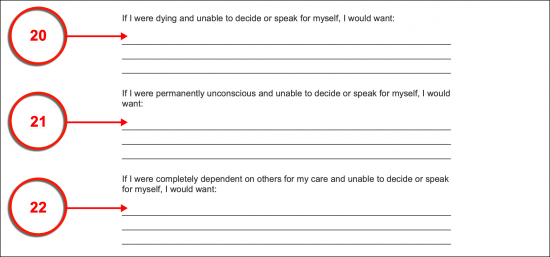
(23) Pain Management In Minnesota. Some medical conditions can cause a permanent level of discomfort while others can be the source of excruciating pain. Inform Minnesota Doctors of your pain management preferences and instructions using the next provided space.
(24) General Health Care Preferences. If there are other concerns or denials of treatment that you wish to declare then, these, too, should be discussed for the future reference of Minnesota medical Professionals.

(25) Requested Physician. If you wish a specific licensed Physician to be informed of your incapacitation and sought for information or treatment then dispense his or her full name, practice or facility name, address, and contact phone numbers.
(26) Health Care Facility Of Choice. You can request treatment from a specific Health Care Facility by documenting its name, address, and phone number. It is strongly recommended that you dispense any extension needed to reach your Primary Care Provider or, if unavailable, the emergency or admission desk.

(27) End-Of-Life Preferences. Set any wishes you have to define your medical care, environment, and/or last wishes to paper in the next section.
(28) Organ Donation As A Minnesota Declarant. If you wish to donate your organs and/or tissues as a Minnesota Organ Donor, then provide your consent using the next statement. The space provided will require specific statements such as “I donate my heart and kidneys for transplant purposes” or “I donate my body to the following institution for medical study.” You can also make a general statement such as “I wish to donate my organs, tissues, and body parts for any purpose needed.”
(29) Post-Death Wishes. You can inform anyone reviewing this document of your post-death wishes on your preference for burial or cremation. If you have named an Agent specifically to handle such matters or have made previous arrangements, then dispense the instructions and contact information necessary to carry them out.

(30) Additional Instructions. If you wish to include concerns, instructions, or provisions over your medical treatment when unable to communicate and in need of medical care then use the next section to present such statements and instructions.

Part III Making The Document Legal
(31) Signature Of Minnesota Principal. As the Minnesota Patient or Principal issuing this paperwork, you must sign this document while two Witnesses watch you or in the presence of a certified Notary Public. Locate the Principal’s signature area then sign the blank line provided making sure to complete the remainder of this section with the items it requests.
(32) Signature Date.
(33) Declarant Date Of Birth.
(34) Declarant Address.
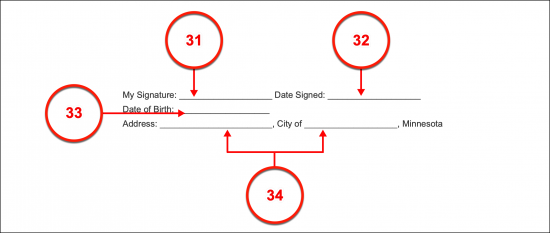
(35) Signature Representative. If you lack the ability to sign this document (i.e., hand tremors) then a Signature Representative may sign on your behalf. The full name of your Signature Representative should be presented
(36) Representative Signing. The Signature Representative must sign his or her own name then print it in the space provided after executing this document on your behalf. Be advised that all requirements of the signature section must be met whether you sign this declaration to effect, or a Signature Representative does so on your behalf (as you watch).
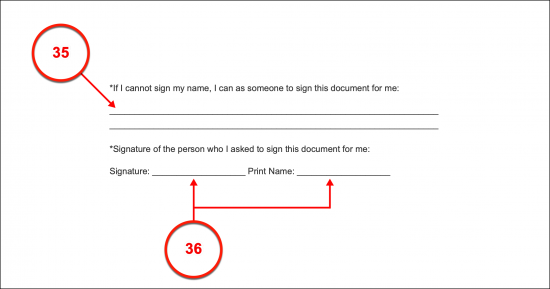
Option 1: Notary Public
(37) Notary Participation. The Notary Public who has watched you (or your Signature Representative) execute this directive must verify the date and your name then provide his or her own signature credentials. This is a recommended option especially since locating a Notary Public for testimony in the future can be much simpler than two unrelated Witnesses.

Signature Of Witnesses
(38) Witness Number 1 Preparation. Supply the current date and your full name as the Minnesota Patient to the testimony provided. These items should be produced to statement (I).

(39)Health Care Facility Employee As Witness. If the Witness is a health Care Employee where you are receiving treatment, then he or she must initial the blank line in Statement (IV).

(40) Witness Number 1 Signature. If Witness 1 has read the completed testimonial and agrees to its representation of the facts behind his or her and your signature, then Witness 1 must sign his or her name and record the current date.
(41) Witness Number 1 Information. The date of Witness 1’s birthday and his or her address should be provided after he or she signed this testimonial.

(42) Witness Number 2 Preparation. The testimonial of Witness 2 is provided in a distinct area that must also be prepared with the current date and your name in Statement (I). If Witness 2 is a Health Care Employee in your Medical Facility, then he or she must initial the blank line in Statement (IV).
(43) Witness Number 2 Signature. Witness Number 2 must sign his or her name then produce the current date to issue the testimony in his or her section.
(44) Witness Number 2 Birth Date.
(45) Witness Number 2 Information. Witness 2 must continue through this area with a record of his or her full address.
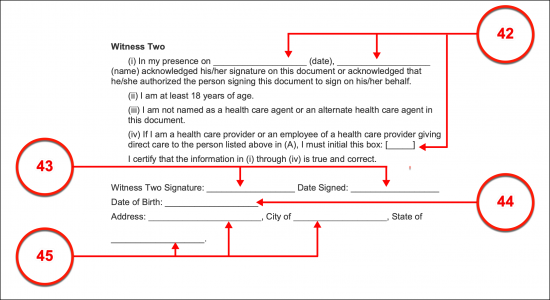
Related Forms
 Durable (Financial) Power of Attorney
Durable (Financial) Power of Attorney
Download: PDF
Download: PDF, MS Word, OpenDocument



